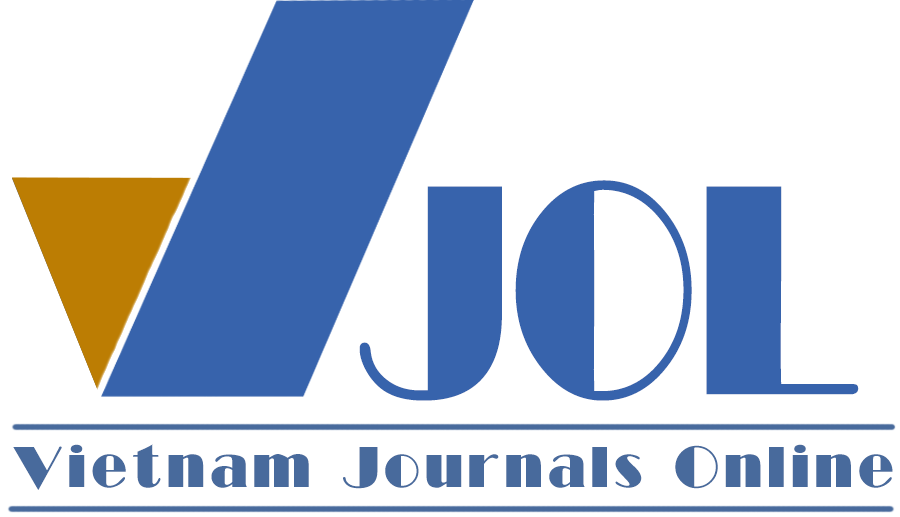Influence of channel communication on purchasing sustainable fashion in the Vietnamese market
Authors
DOI: https://doi.org/10.57110/vnu-jeb.v4i2.284Keywords:
Purchase intention, communication channel, customer attitude, sustainable fashionReferences
Abrar, M., Sibtain, M. M., & Shabbir, R. (2021). Understanding purchase intention towards eco-friendly clothing for generation Y & Z. Cogent Business & Management, 8(1), 1997247. https://doi.org/10.1080/23311975.2021.1997247
Ajzen, I., & Fishbein, M. (1975). A Bayesian analysis of attribution processes. Psychological Bulletin, 82 (2), 261–277. https://doi.org/10.1037/h0076477
Arora, N., Rana, M. & Prashar, S. (2023). How Does Social Media Impact Consumers’ Sustainable Purchase Intention? Review of Marketing Science, 21(1), 143-168. https://doi.org/10.1515/roms-2022-0072
Bohn, C. (2004). Clothing as medium of communication. In Inklusion, Exklusion und die Person (pp. 95–127). Konstanz University Press.
Busser, J. A., & Shulga, L. V. (2019). Involvement in consumer-generated advertising: Effects of organizational transparency and brand authenticity on loyalty and trust. International Journal of Contemporary Hospitality Management, 31(4), 1763-1784. https://doi.org/10.1108/IJCHM-10-2017-0685
Cayaban, C. J. G., Prasetyo, Y. T., Persada, S. F., Borres, R. D., Gumasing, M. J. J., & Nadlifatin, R. (2023). The influence of social media and sustainability advocacy on the purchase intention of Filipino consumers in fast fashion. Sustainability, 15(11), 8502. https://doi.org/10.3390/su15118502
Cervellon, M. C., Hjerth, H., Ricard, S., & Carey, L. (2010). Green in fashion: An exploratory study of national differences in consumers concern for eco-fashion.
Champniss, G. (2015). Why your customers’ social identities matter. Harvard Business Review. https://hbr.org/2015/01/why-your-customers-social-identities-matter
Chang, H. J., & Watchravesringkan, K. T. (2018). Who are sustainably minded apparel shoppers? An investigation to the influencing factors of sustainable apparel consumption. International Journal of Retail & Distribution Management, 46(2), 148–162. https://doi.org/10.1108/IJRDM-10-2016-0176
Chen, L., He, L., Yan, X., & Liu, C. (2022). Green message framing in enhancing sustainable consumption behavior of fashion based on the cross-theoretical model. Journal of Environmental and Public Health, 2022, 1–14. https://doi.org/10.1155/2022/4038992
Chen, Y. S., & Chang, C. H. (2013). Greenwash and green trust: The mediation effects of green consumer confusion and green perceived risk. Journal of Business Ethics, 114(3), 489–500. https://doi.org/10.1007/s10551-012-1360-0
Cherrier, H. (2009). Anti-consumption discourses and consumer-resistant identities. Journal of Business Research, 62(2), 181–190. https://doi.org/10.1016/j.jbusres.2008.01.025
Dalen, J. H. (2021). Communicating sustainability in marketing advertisements: The influence of visualization and advertisement claims on Instagram advertisements of sustainable clothing brands. [Bachelor’s thesis]. University of Twente.
Davis, F. D. (1989). Perceived usefulness, perceived ease of use, and user acceptance of information technology. MIS Quarterly, 13(3), 319–340. https://doi.org/10.2307/249008
García-Santiago, M. D. (2022). Communicating the resilience and corporate social responsibility of SMEs during lockdown in Spain: A visual and exploratory study of communication mechanisms and strategies. Sustainability, 14(13), 7944. https://doi.org/10.3390/su14137944
Grappi, S., Bergianti, F., Gabrielli, V., & Baghi, I. (2024). The effect of message framing on young adult consumers’ sustainable fashion consumption: The role of anticipated emotions and perceived ethicality. Journal of Business Research, 170, 114341. https://doi.org/10.1016/j.jbusres.2023.114341
Guan, P. T. H. (2022). Search journal of media and communication research. Film Journals, ICEMC 2021, 141–156.
Hair, J. F., Hult, G. T. M., Ringle, C., & Sarstedt, M. (2016). A primer on partial least squares structural equation modeling (PLS-SEM) (2nd ed.). Sage Publications.
Hair, J. F., Hult, G. T. M., Ringle, C. M., & Sarstedt, M. (2014). A primer on partial least squares structural equation modeling (PLS-SEM). Sage Publications.
Harjadi, D., & Gunardi, A. (2022). Factors affecting eco-friendly purchase intention: Subjective norms and ecological consciousness as moderators. Cogent Business & Management, 9(1), 2148334. https://doi.org/10.1080/23311975.2022.214833
Henninger, C. E., Alevizou, P. J., & Oates, C. J. (2016). What is sustainable fashion? Journal of Fashion Marketing and Management, 20(4), 400-416.
Trong, H., & Ngoc, C. N. M. (2008). Research Data Analysis with SPSS. Hong Duc Publisher, Vol. l, Ho Chi Minh City.
Hu, L. T., & Bentler, P. M. (1999). Cutoff criteria for fit indexes in covariance structure analysis: Conventional criteria versus new alternatives. Structural Equation Modeling: A Multidisciplinary Journal, 6(1), 1–55. https://doi.org/10.1080/10705519909540118
Hur, E., & Cassidy, T. (2019). Perceptions and attitudes towards sustainable fashion design: Challenges and opportunities for implementing sustainability in fashion. International Journal of Fashion Design, Technology and Education, 12(2), 208–217. https://doi.org/10.1080/17543266.2019.1572789
Jacobson, J., & Harrison, B. (2021). Sustainable fashion social media influencers and content creation calibration. International Journal of Advertising, 41(1), 1–28. https://doi.org/10.1080/02650487.2021.2000125
Jägel, T., Keeling, K., Reppel, A., & Gruber, T. (2012). Individual values and motivational complexities in ethical clothing consumption: A means-end approach. Journal of Marketing Management, 28(3–4), 373–396. https://doi.org/10.1080/0267257X.2012.659280
Jin, E., & Atkinson, L. (2021). The moderating role of emotion: The combinatory effects of positive emotion and news framing techniques on climate change attitudes. Journalism & Mass Communication Quarterly, 98(3), 749-768. https://doi.org/10.1177/1077699020988105
Johnstone, L. (2022). Sustainably sustaining (online) fashion consumption: Using influencers to promote sustainable (un)planned behavior in Europe’s millennials. Journal of Retailing and Consumer Services, 64, 102775. https://doi.org/10.1016/j.jretconser.2021.102775
Karlsson, A. (2015). Communication of sustainable fashion: To communicate sustainable fashion through the label. Semantic Scholar.
Khan, O., Varaksina, N., & Hinterhuber, A. (2024). The influence of cultural differences on consumers’ willingness to pay more for sustainable fashion. Journal of Cleaner Production, 442, 141024–141024. https://doi.org/10.1016/j.jclepro.2024.141024
Kopot, C., & Cude, B. J. (2021). Channel depth or consistency? A study on establishing a sustainable omnichannel strategy for fashion department store retailers. Sustainability, 13(13), 6993. https://doi.org/10.3390/su13136993
Kozinets, R. V., & Handelman, J. M. (2004). Adversaries of consumption: Consumer movements, activism, and ideology. Journal of Consumer Research, 31, 691-704. https://doi.org/10.1086/425104
Kusá, A., & Urmínová, M. (2020). Communication as a part of identity of sustainable subjects in fashion. Risk and Financial Management, 13(12), 305. https://doi.org/10.3390/jrfm13120305
Li, Z., Yuan, J., Du, B., Hu, J., Yuan, W., Palladini, L., Yu, B., & Zhou, Y. (2020). Customer behavior on purchasing channels of sustainable customized garment with perceived value and product involvement. Frontiers in Psychology, 11, 588512. https://doi.org/10.3389/fpsyg.2020.588512
Lin, P., & Chen, W. (2022). Factors that influence consumers’ sustainable apparel purchase intention: the moderating effect of generational cohorts. Sustainability, 14(14), 8950. https://doi.org/10.3390/su14148950
Mcleod. S (2024). Maslow’s hierarchy of needs. Simply Psychology.
McNeill, L., & Moore, R. (2015). Sustainable fashion consumption and the fast fashion conundrum: Fashionable consumers and attitudes to sustainability in clothing choice. International Journal of Consumer Studies, 39(3), 212–222. https://doi.org/10.1111/ijcs.12169
Nickerson, C. (2023). Herzberg’s two-factor theory of motivation-hygiene. Simply Psychology.
Nickerson, R. S. (1998). Confirmation bias: a ubiquitous phenomenon in many guises. Review of General Psychology, 2(2), 175–220. https://doi.org/10.1037/1089-2680.2.2.175
Niinimäki, K. (2010). Eco-clothing, consumer identity and ideology. Sustainable Development, 18(3), 150–162. https://doi.org/10.1002/sd.455
Noble, I., & Bestley, R. (2011). Visual research: An introduction to research methodologies in graphic design (2nd ed.). AVA Publishing.
Nunnally, J. C., & Bernstein, I. H. (1994). Psychometric Theory (3rd ed.). McGraw-Hill.
Paul, J., Modi, A., & Patel, J. (2016). Predicting green product consumption using theory of planned behavior and reasoned action. Journal of Retailing and Consumer Services, 29, 123-134. https://doi.org/10.1016/j.jretconser.2015.11.006
Rausch, T. M., & Kopplin, C. S. (2021). Bridge the gap: Consumers’ purchase intention and behavior regarding sustainable clothing. Journal of Cleaner Production, 278, 123882. https://doi.org/10.1016/j.jclepro.2020.123882
Ray, S., & Nayak, L. (2023). Marketing sustainable fashion: Trends and future directions. Sustainability, 15(7), 6202. https://doi.org/10.3390/su15076202
Schleicher, D. J. & Watt, J. D. (2013). Attitudes. Oxford Bibliographies Online.
Silva, M. P. (2022). Sustainable fashion communication in retail: The role of ecolabels in sustainable fashion consumption. Universidade Da Beira Interior, Universidade Europeia.
Soyer, M., & Dittrich, K. (2021). Sustainable consumer behavior in purchasing, using and disposing of clothes. Sustainability, 13, 8333. https://doi.org/10.3390/su13158333
Thomsen, C. (2013). Sustainability (World commission on environment and development definition). Encyclopedia of Corporate Social Responsibility, 2358-2363.
Tucker, L. R., & Lewis, C. (1973). A reliability coefficient for maximum likelihood factor analysis. Psychometrika, 38(1), 1–10. https://doi.org/10.1007/BF02291170
United Nations Environment Programme & United Nations Climate Change. (2023). The sustainable fashion communication playbook.
Vetrivel, V., Deepa, S., Vinayagam, K., Gokulakrishnan, A., & Thirumalvsalavan, K. (2023). Understanding consumer perceptions of brand determinants in service sector brand extension. International Journal of Commerce and Management Research, 9(5), 2023, 1-5.
Vladimirova, K., Henninger, C. E., Alosaimi, S. I., Brydges, T., Choopani, H., Hanlon, M., ... & Zhou, S. (2023). Exploring the influence of social media on sustainable fashion consumption: A systematic literature review and future research agenda. Journal of Global Fashion Marketing, 15(2), 181-202. https://doi.org/10.1080/20932685.2023.2237978
Wijaya, S. G. T., & Paramita, E. L. (2021). Purchase intention toward sustainable fashion brand: Analysis on the effect of customer awareness on sustainability on willingness to pay. Diponegoro International Journal of Business, 4(1), 49-57. https://doi.org/10.14710/dijb.4.1.2021.49-57
World Ocean Review. (2015). What is sustainability? World Ocean Review. Sustainable Use of Our Oceans. Making Ideas Work.
Younus, S., Rasheed, F. & Zia, A. (2015). Identifying the factors affecting customer purchase intention. Global Journal of Management and Business Research, 15(2), 8-13.
Zhang, C.-T., & Wang, Z. (2021). Production mode and pricing coordination strategy of sustainable products considering consumers’ preference. Journal of Cleaner Production, 296, 126476. https://doi.org/10.1016/j.jclepro.2021.126476
Downloads
Downloads
Published
Abstract View
PDF Downloaded
How to Cite
Issue
Section
License
Copyright (c) 2024 Dao Cam Thuy, Do Thi Bich Ngoc, Vu Khanh Linh, Tran Quynh Anh, Bui Phuong Uyen, Do Hoang Nhat Mai

This work is licensed under a Creative Commons Attribution-NonCommercial 4.0 International License.
by VNU Journal of Economics and Business
Most read articles by the same author(s)
- Dao Cam Thuy, Phung Tuan Kiet, Kieu Trang An, Do Vu Phuong Anh, The influence of brand sound on brand recognition of Vietnamese consumers , VNU University of Economics and Business: Vol. 3 No. 6






